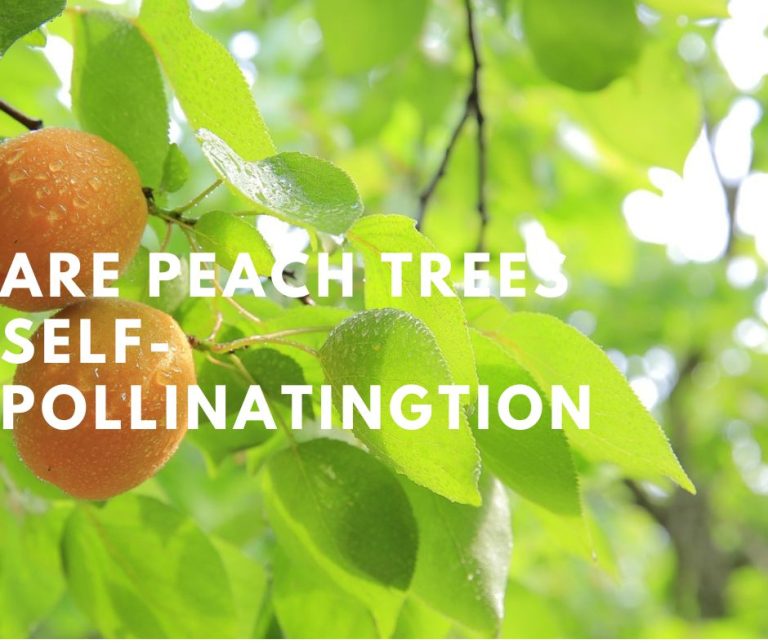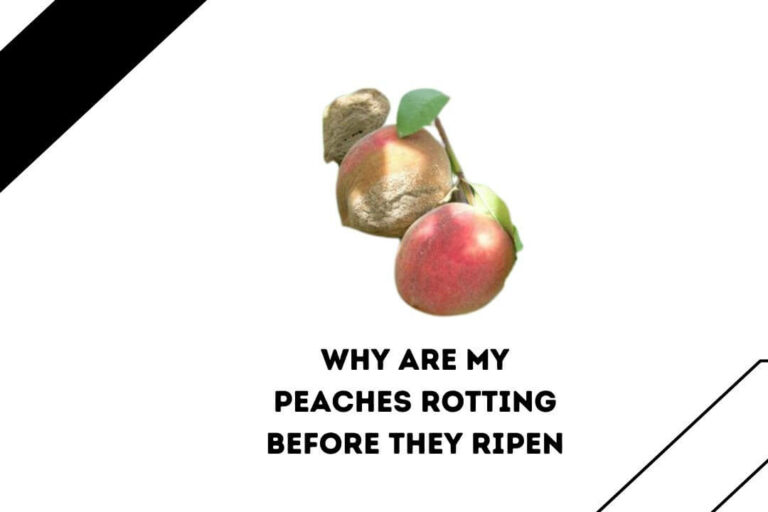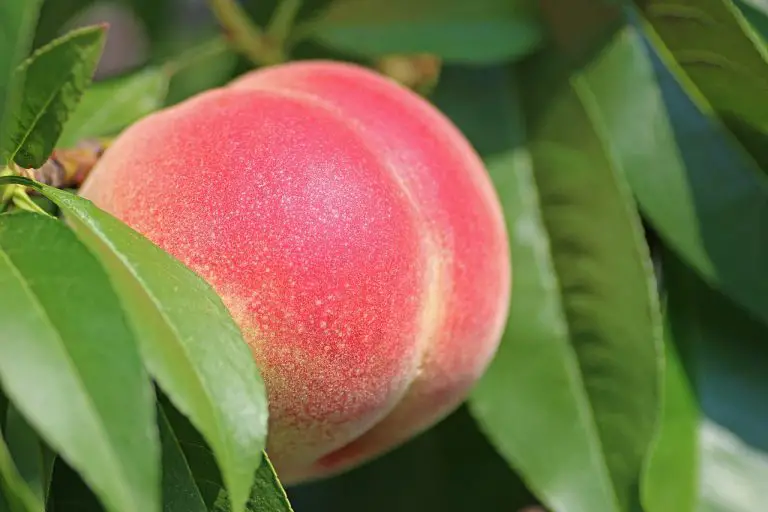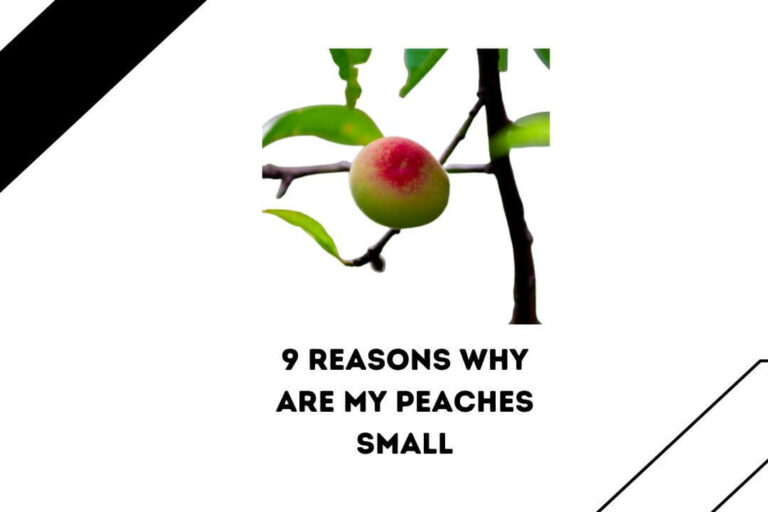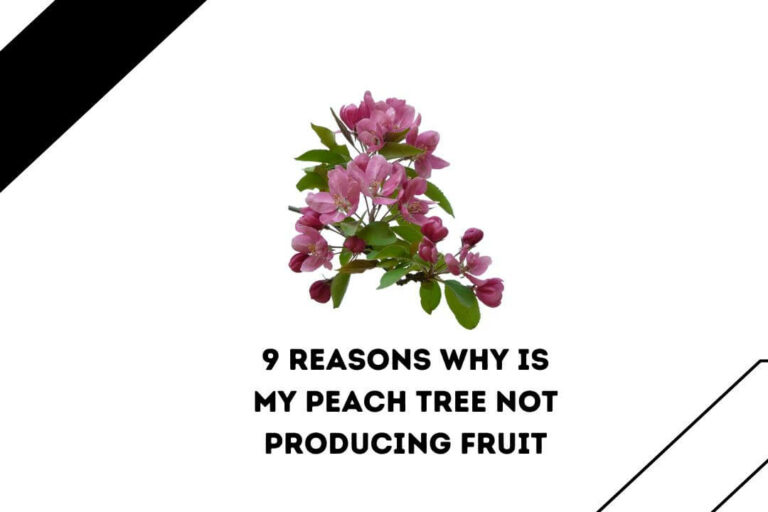If you’re a peach tree owner, you might have noticed its leaves curling up, making you concerned. Well, there are a few different reasons why this might be happening, and In this article, I will answer the frequently asked question: why is my peach tree leaves curling?
Since it’s essential to identify the cause so that you can take appropriate action to help your tree stay healthy and productive, we’ll go over five common reasons why peach tree leaves curl and what you can do about them.
After reading this article, I guarantee you will have all the information you need to know and identify the actual blame for the curling of peace tree leaves. Further, we will discuss what you can do to fix it and some tips to prevent this from happening again.
Five reasons why are my peach tree leaves curling
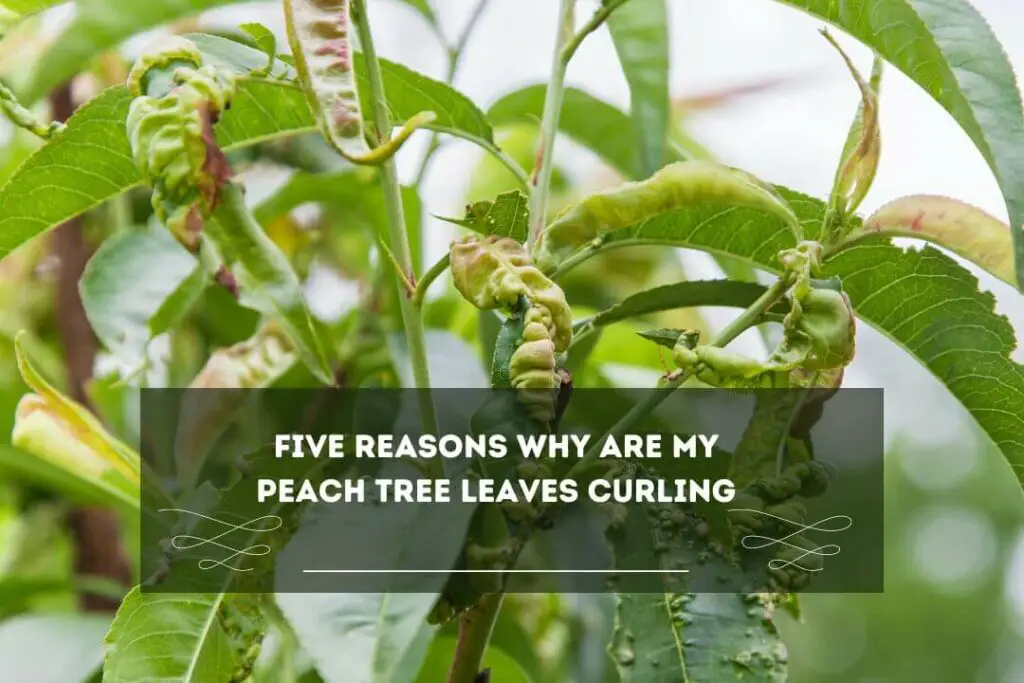
Peach Leaf Curl Disease
You should know about this common fungal disease if you have a peace treat. In significant cases, a fungal infection, commonly known as leaf curl in peach trees, is caused by the Taphrina deformans fungus.
This fungus infects your tree’s young leaves in the spring. If this fungal disease infects your tree, the leaf color turns red, pink, or purple and becomes distorted &curled.
Few people have also reported that this disease causes premature fruit drop and weakens the tree over time. According to research by the University of California Agriculture and natural resource, peach leaf curl disease can cause significant yield losses.
Therefore, if you are looking for ways to prevent this disease, I highly recommend you first choose disease-resistant peach varieties, practice good sanitation, & apply fungicides as needed. I’ve recently shared a helpful article on the 3 Best Homemade Spray For Peach Leaf Curl; you should check it out here.
What to do?
- Firstly I will advise you to Look for symptoms of peach leaf curl disease, such as curled and distorted leaves with a red, pink, or purple color. You must confirm the condition by sending a sample to a nearby lab or consulting with a horticulturist.
- Alternatively, it would be best to consider choosing disease-resistant peach tree varieties, such as Redhaven, Cresthaven, or Elberta. These varieties have been reported to be less susceptible to peach leaf curl disease. Some are self-fertile peach tree varieties that don’t require pollination from another tree.
- I will also recommend you practice good sanitation by removing and destroying infected leaves & debris around the base of the tree, ultimately reducing the spread of the disease.
- It would be best if you never minded using a fungicide labeled for peach leaf curl disease. Make sure you are following the application instructions carefully because timing is essential.
- It would be best to consider providing adequate water, nutrients, and sunlight to keep your peach tree healthy. Also, avoid over-fertilization and try to improve tree health by reducing the risk of infection.
If you’re choosing disease-resistant peach tree varieties, you might want to find out which is better! Thus, below are a few related topics that you may find helpful.
Environmental Stress
Tree leaves curling due to environmental stress is not uncommon. It is common to notice this occurring in many parts of the world that experiences frequent weather changes.
Environmental stressors like high temperatures, drought, and excessive rainfall can cause your peach tree leaves to curl unexpectedly. Research by the University of California states that excessive rain can cause heavy losses in peach crops.
Suppose you want to prevent environmental damage. In that case, I highly advise you to choose the right type of peach variety according to your region and provide them proper protection from extreme weather events. Also, make sure to practice correct & adequate irrigation systems.
What to do?
- Before You take any action, I highly advise you to identify what environmental stressor is affecting your peach tree and take measures accordingly.
- As I told you earlier, you should always choose the peach variety that suits your region’s climatic conditions to prevent environmental damage. Never mind if you don’t know what type of peach tree you should grow in your garden. Consult with a local expert.
- To protect your trip from extreme weather events like storms, heavy rainfall, or prolonged drought, I Highly advise using mulch or covering the trees with a protective layer. This will ultimately minimize the impact of these environmental stressors.
- If you want to prevent water stress in the trees, which can also cause leaf curling, I will advise you to practice proper irrigation based on your tree’s age, size, and environmental conditions.
- Lastly, I advise you to regularly monitor your peach trees for any signs of stress or disease because early detection can prevent the spread of diseases and minimize the damage caused by environmental stressors.
Pest Infestations:
Like any other three, your peach tree is also prone to pest infestation. Many types of pests, such as asaphids, spider mites, and scale insects, can also cause Serious damage to the peach tree leaves and make them curl. You should also know that these pests can suck the sap from your peach tree leaves which ultimately leads or cause them to twist &distort.
As per the research by the UGA, spider mites can cause significant damage to peach trees, reducing both fruit yield and quality. This is why I first recommend you practice proper sanitation and monitor your peach trees regularly. In addition to this, you should never hesitate to use insecticides if required. Your tree is more prone to pest infestation when dormant. Hence if your peach tree is not producing fruit or peaches rotting before they ripen, it is likely to be affected by pests & insects,
What to do?
- First, I highly advise you to Regularly clean up the fallen leaves, fruits, and other debris from around your peach tree to eliminate potential hiding places for pests.
- Then it would be best to regularly inspect your peach tree for signs of pest infestation like curled leaves, sticky residue on leaves, or visible pests. If found any, take action as soon as possible.
- If you notice any significant infestation, I will advise you to use the appropriate type and amount of insecticide for your peach tree.
Nutrient Deficiencies
Many nutrients are essential for your peace tree to thrive and grow properly. Nutrient deficiencies, particularly zinc or magnesium, can cause peach tree leaves to curl. Zinc deficiency is common when your peach tree soil is very alkaline.
On the other hand, magnesium deficiency is a lot more common in sandy soils. According to research by the University of California, Davis, potassian deficiency can cause significant yield losses in peach trees, while magnesium deficiency can reduce fruit size and quality. However, it doesn’t mean that magnesium deficiency alone will affect the fruit size and yield. Sometimes there can be other factors at play. This is why you should consider reading this article, where we have shared 9 Reasons Why Are My Peaches Small
You will find many of my articles where I frequently recommend getting your soil tested regularly and fertilizing your trees appropriately as required. Therefore, if you also want to prevent nutrient deficiency in peach trees, never fertilize your soil before trying it.
What to do?
- As mentioned earlier, you must regularly test your soil for nutrient deficiencies. This will help you to determine the appropriate fertilizers and the right amount to use on your peach tree.
- Once you know what your peace tree needs, fertilize it appropriately.
- As I told you earlier, you should never fertilize your soil before testing it. This can cause an imbalance in the soil’s nutrients, leading to more significant problems like stunted growth.
Overwatering
The most common but underlooked cause for peach leaves curling is said to be overwatering. Believe it or not but overwatering has been frequently noticed as the most common culprit for leaves winding in peach trees.
Not only can overwatering hamper the leaves of your peach trees, but it can also lead to root rot and other problems. According to research by scientists at the Scientist of the University of Florida, overwatering can cause up to 20% losses in peach crops.
Therefore you should always prevent overwatering. I will advise you to water your trees deeply and infrequently rather than shallowly and frequently. Also, make sure that your peach trees’ soil has good drainage.
Tip: Avoid planting your trees in low-lying areas.
What to do?
- Instead of watering your peach trees shallowly and frequently, You should only provide a good soak once or twice a week. This is enough to encourage profound root growth and help your tree to access water more effectively.
- Apart from watering it only, ensure your peach tree’s soil has good drainage. If the soil is too compact or lacks organic matter, it may become waterlogged and lead to root rot. If this is the case, I recommend you add some compost or other organic matter to it and help to improve drainage.
- It would be best if you never hesitated to use a moisture meter or a simple stick to check the moisture level of your peaches’ soil before watering it again. If the ground feels moist, hold off on watering until it becomes drier.
FAQ
How do I treat peach leaf curl?
If you want to treat peach leaf curl, I will advise using fungicides to target the fungus causing the disease. Before applying it, consider removing and destroying all infected leaves first. Only use it when your tree is dormant while following the recommended application rate.
Is peach leaf curl curable?
Yes, peach leaf curl is very much curable If proper care and appropriate treatment are provided. Depending upon the actual culprits, you must use the correct type of fungicide and take appropriate preventive measures systematically to control and eliminate the disease effectively.
How do you get rid of peach leaf curls naturally?
If you want to remove peach leaf curl naturally, use baking soda and water as a fungicide spray. You can mix one tablespoon of baking soda with one gallon of water. After that, spray the solution on the affected tree.
Conclusion.
In this article, I try my best to give you proper knowledge and in-depth information on all the five common reasons why my peach tree leaves to curl. Since there can be many culprits, I recommend contacting a professional horticulturist who can do this for you.
You should never hesitate to use a fungicide if the problem concerns fungus. But make sure only to use it in a dormant season. Alternatively, you should also use insecticides and proper fertilizer If required.
If you find this post helpful, then consider sharing it. Your share will help people learn about the reasons for peach leaf curling. Do check our other useful guides on peach tree care and management. See you in the next post, till then take care and goodbye.

